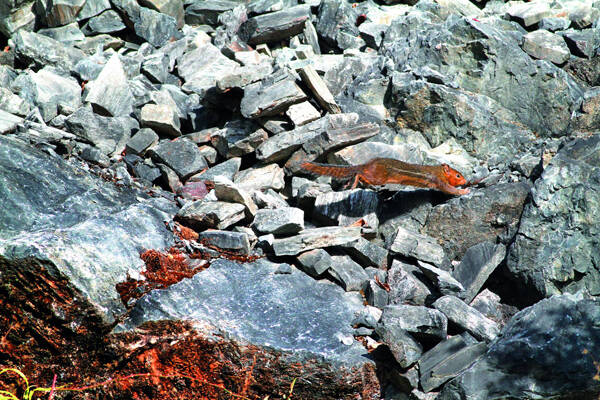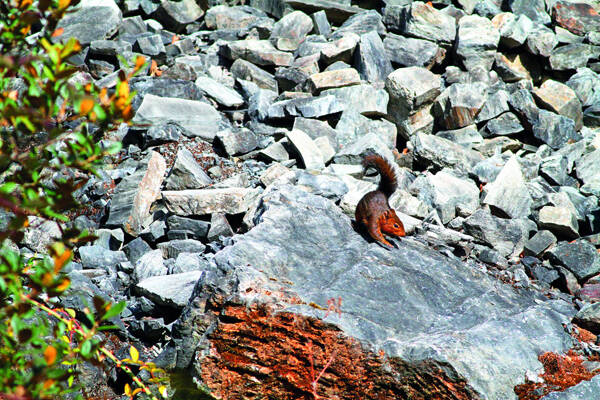Sciurotamias forresti
IUCN
LCBasic Information
Scientific classification
- name:Sciurotamias forresti
- Scientific Name:Sciurotamias forresti,White-lined rock squirrel, White-throated rock squirrel, Forster's rock squirrel, Forster's rock squirrel
- Outline:Rodents
- Family:Rodentia Sciuridae R.Squirrel
Vital signs
- length:195-250mm
- Weight:
- lifetime:
Feature
There is a narrow white stripe on the side of the body from the shoulder to the buttocks, and a black stripe below the white stripe.
Distribution and Habitat
In China, it is distributed in Yunnan, western and southwestern Sichuan, and southwestern Guangxi.
The habitat of the side-striped rock squirrel is mainly in rocky and sparsely wooded hilly mountainous areas. It mainly moves on the ground, is good at climbing, and is agile. Most of its nests are built in rock cracks. Its food is mainly fruits and seeds of plants.
Appearance
The body shape is similar to that of rock squirrels. There is a white patch in the middle of the throat, and the cheeks, ears, and sides of the neck are brown. There is a narrow white stripe on the side of the body. The tail is slightly shorter than the body length. The back of the body is dark brown, and the abdomen is light ochre yellow. The front and back feet are brown. The tail hair is dark brown with white tips. The skull is low and flat, and the nasal bone is longer than the width of the orbit. The auditory bulla is well developed.
Details
The body size of the side-striped rock squirrel is similar to that of the rock squirrel. It lives in rocky mountainous areas. It lives in camps, but is also good at climbing trees. It is often active during the day, agile, and builds nests in the cracks of rocks. It feeds on nuts and seeds, and can steal crops such as grains, which is harmful to agriculture and forestry. In North China, the cubs can leave the nest and live independently in May and June, which shows that the mother mates in March and April and gives birth in April and May.

Distributed in western Yunnan and northwestern Yunnan east of the Lancang River in Yunnan Province, as well as the southern edge of Sichuan, it is an endangered species. Winter fur can be used as decorative leather. After the bones are air-dried, they have the function of promoting blood circulation and dispelling wind, and have certain medicinal value.
Listed in the China Red List of Biodiversity - Vertebrate Volume, the assessment level is Vulnerable (VU)









